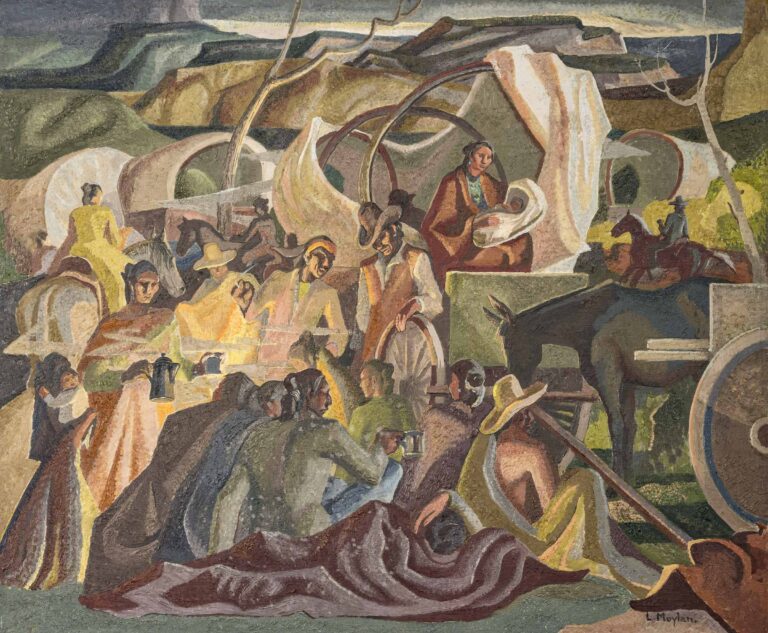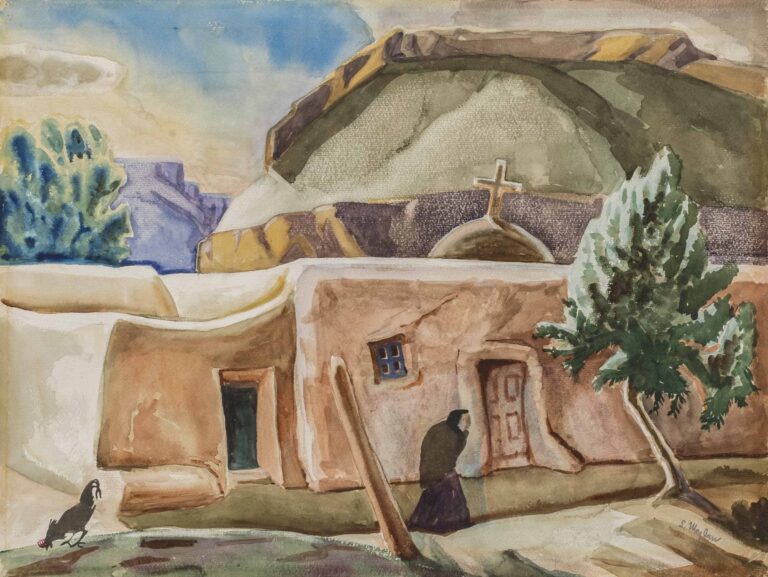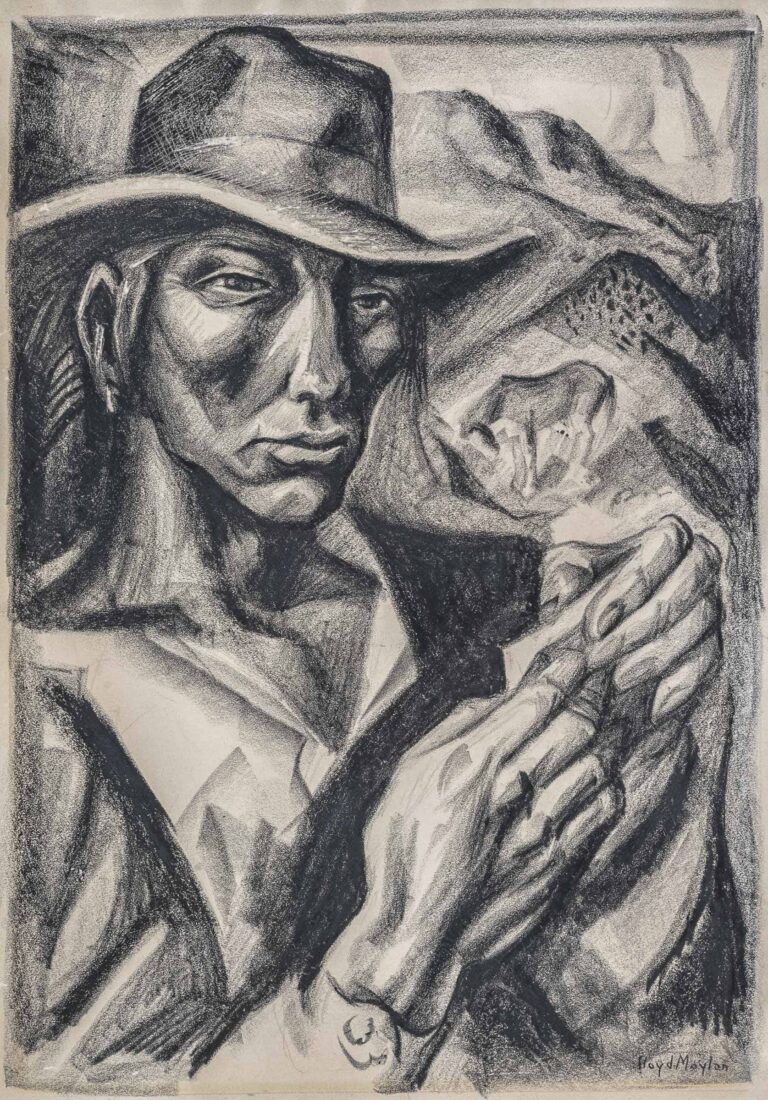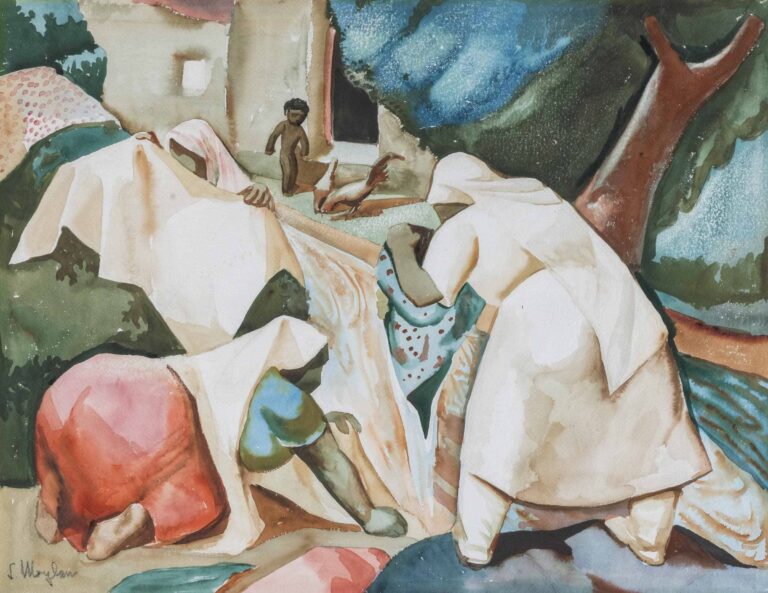Since the late 1880s, photographers from Charles Lummis to Edward Curtis, as well as painters—especially those associated with the Taos Society of Artists—frequently pictured Pueblo ceremonial dances as the appetite and market for images of the Southwest’s Native peoples grew with the expansion of the railroad and rise of the tourist economy. Dance at San Felipe is Lloyd Moylan’s rendition of this popular voyeuristic subject, but rather than providing an “eye witness” account, the painting appears contrived. The overall image is too “clean,” lacking visual information and detail, and too perfect in its orderliness and symmetry. Perhaps Moylan modeled this scene on other artworks he had seen, possibly mass-produced picture-postcards, calendars, and other souvenir items and promotional materials. (The artificiality of this piece comes into focus in comparison to Moylan’s Squaw Dance.)




















